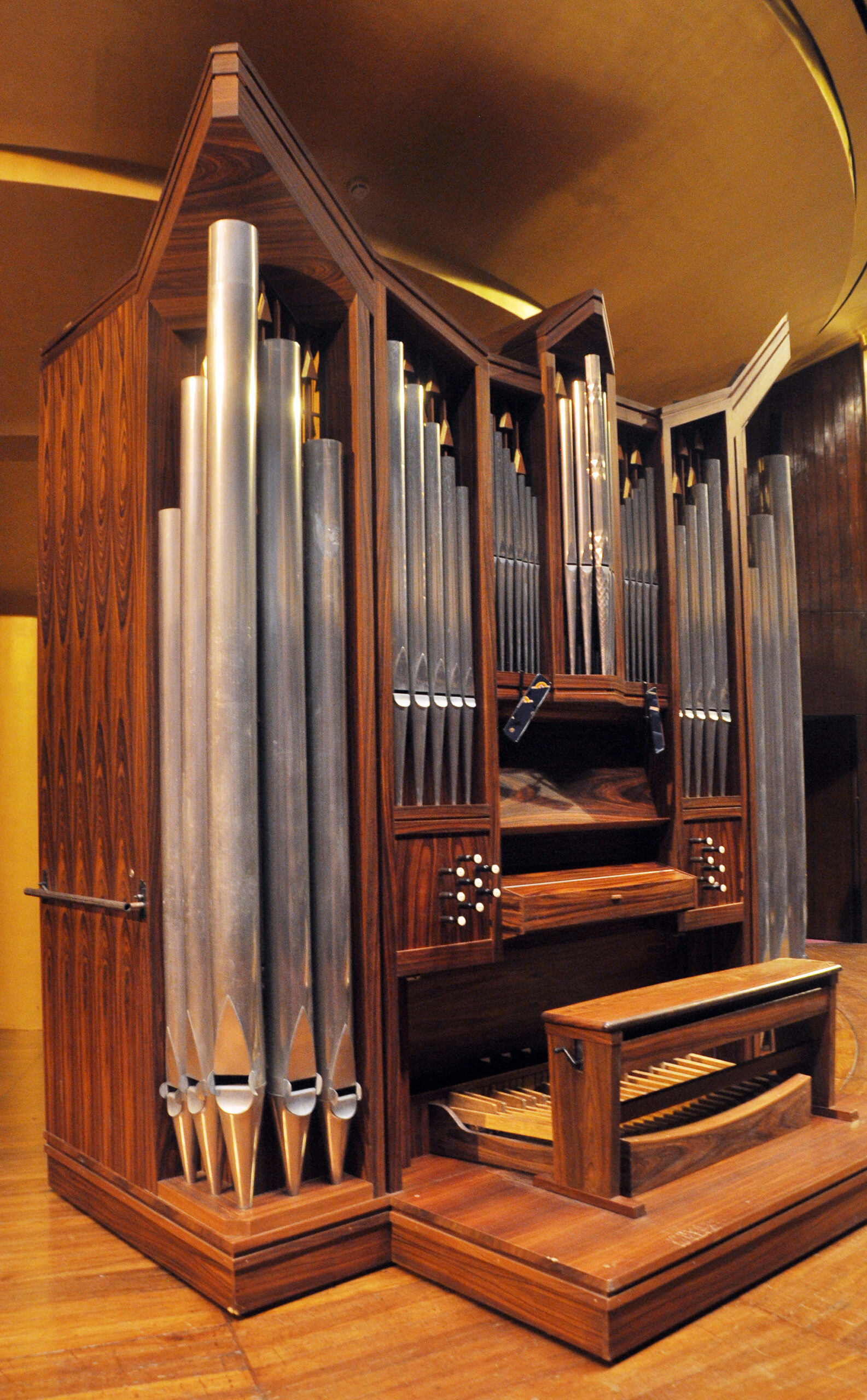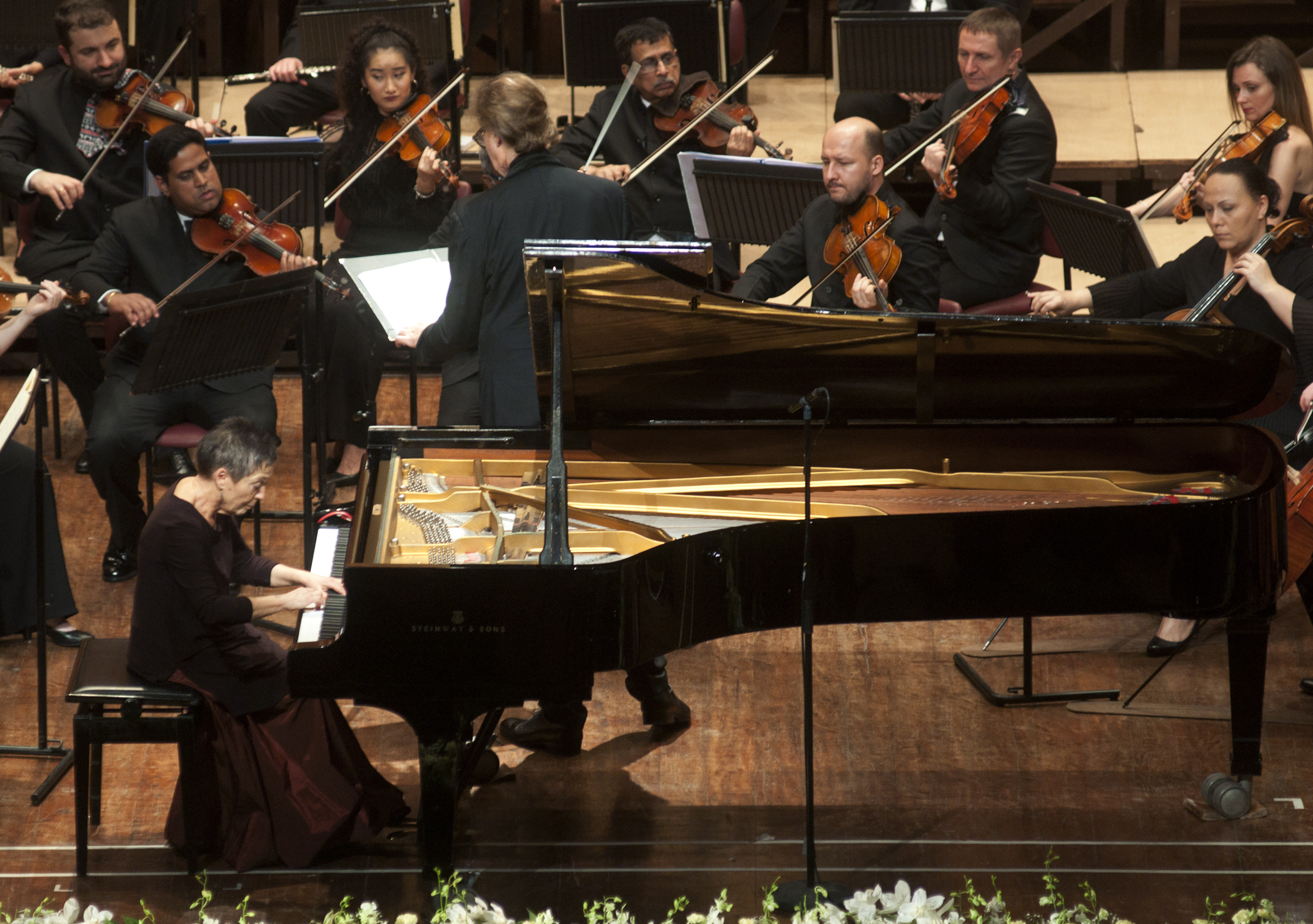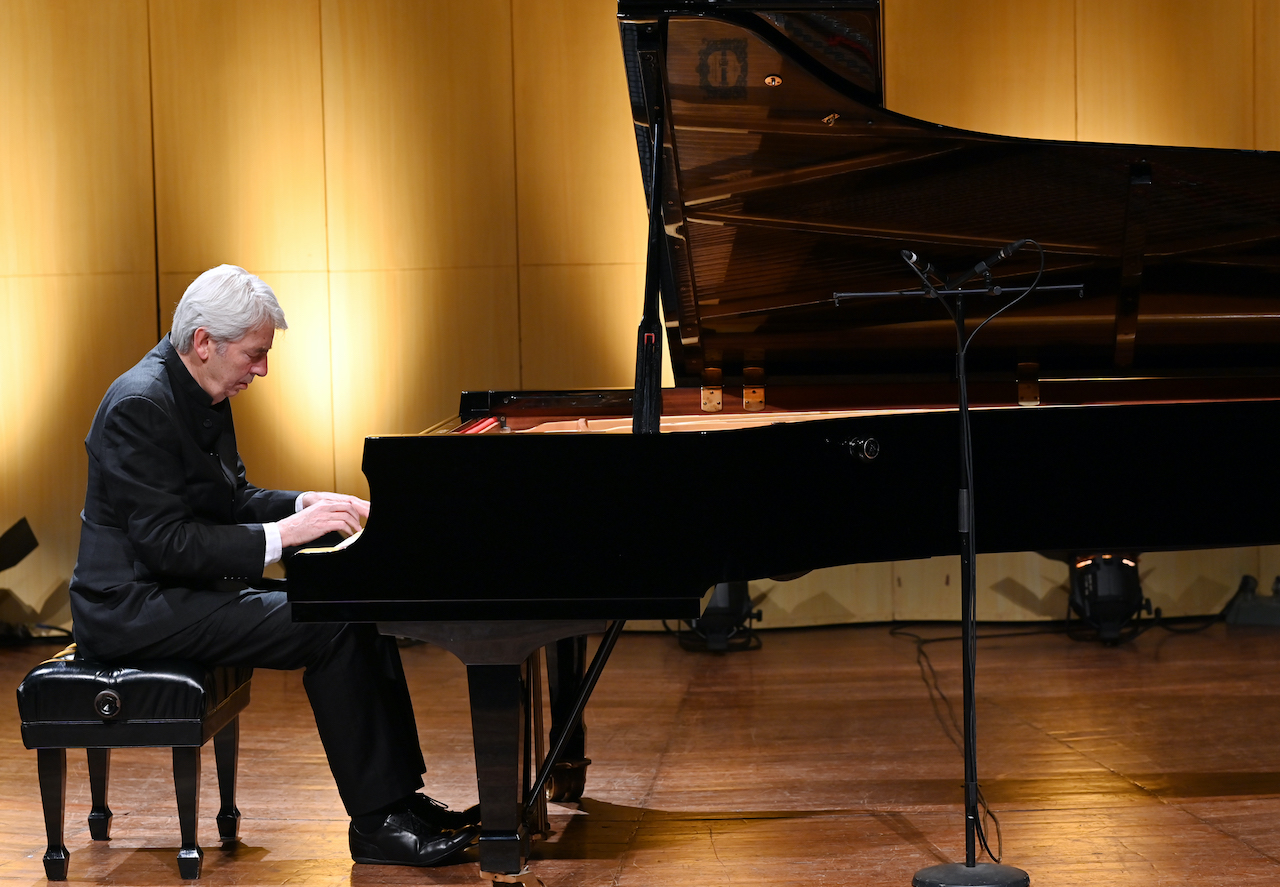Keys of note

In the final part of the series on the NCPA’s collection of musical instruments, we take you through the ins and outs of a prized pipe organ gifted to the NCPA circa 1988. We also bring to the fore top-notch pianos that light up many a recital across our performance venues. By Beverly Pereira
Deep inside the recesses of the Tata Theatre sits a monumental and venerable instrument. To get a glimpse of it is awe-inspiring and to listen to it is to be imprinted with its melodious strains. The NCPA’s concert pipe organ is one of four functional pipe organs in Mumbai; it is also the first of its kind, in that it is the only movable pipe organ to exist in the city. The pipe organ in itself is an instrument associated with superlatives, for it is all but impossible for any other instrument to produce the sheer variety of tone and timbre that a pipe organ can.
The concert pipe organ at the NCPA was a gift from the industrial and business community of the Federal Republic of Germany (as represented in the Indo-German Chamber of Commerce). It was built by the legendary pipe organ makers Rudolf von Beckerath Organ Builders of Hamburg between 1986 and 1987. Fittingly, it was commissioned in 1985 to mark the tricentenary of the birth of celebrated organ composers Bach and Handel; that very year, India’s commemorative postal stamps paying homage to the composers were released at the NCPA. “The initial visit by our former technical and managing director (the late) Timm Sckopp was in March 1985. Upon this visit, he configured the size and tonal disposition of the instrument, taking the special situation of the rotating stage into consideration,” recalls Holger Redlich, Business Manager, Rudolf von Beckerath Organ Builders. Sckopp was accompanied by a third-year apprentice at the company to install the gargantuan instrument at the NCPA in 1988. Over the first three days of March that year, the city’s organ lovers were treated to a series of concerts, commencing with an organ solo by German organist Prof. Edgar Krapp, followed by a performance with the Paranjoti Academy Chorus conducted by Coomi Wadia with Prof. Krapp at the organ again, and another with the Bombay Chamber Orchestra.
An instrument of many feats
The pipe organ is one of the most complex mechanical instruments developed before the Industrial Revolution. Mozart called it the “king of instruments”, while Bach’s Toccata and Fugue in D minor remain among the most famous pieces of organ music from the Baroque era. Its complex mechanism also demands that the upkeep of this instrument is meticulous, and makes its maintenance an expensive affair. Used for organ recitals and concertos for organ or orchestra, this wind instrument is built and voiced by masterful hands and ears to suit the physical space it occupies, its sound filling the space which it was built for. Further, there’s a reason behind the English idiom ‘to pull out all the stops’—an organist requires immense dexterity to pull out the stops of a pipe organ to be able to switch between tones, all the while playing its keys and manoeuvring the pedals below. At the Tata Theatre, the concert pipe organ’s 708 conical and cylindrical pipes are responsible for its unique sound. But it is really the combined working of the metal pipes, stops and pedals that gives the pipe organ its enormous range. The Beckerath-make instrument sports two keyboards (manuals) with six stops for the upper manual, five for the lower and three for its pedals.

The pipe organ featured at many memorable concerts after the inaugural show, until it was locked away due to the diminishing presence of Western classical music over the years, the lack of organists and that of funds. It wasn’t until 2006, when the Symphony Orchestra of India was formed, that Western classical music saw a revival at the NCPA. In 2013, the department reached out to the legendary German makers upon rediscovering the beautiful instrument, now in dire need of repair. “It was obviously in a poor condition. The main problem was the fact that part of the materials such as leather and felt were eaten by insects and without these gaskets, the air pressure for the pipes could escape,” Holger explains.
That year, Sun eun Kwak, Beckerath’s employee in the Asian region, arrived in Mumbai for an inspection. The following year saw him return to the NCPA with the organ makers’ German technician Siegmund Tessler to painstakingly perform the overhaul and repair. The pipe organ had found its voice once again and, after a grand passage of time, even enthralled an entirely new generation of listeners at a 2013 concert featuring the UK’s South West Festival Chorus with the Symphony Orchestra of India. Subsequent maintenance visits from 2015 to 2017, with the last taking place in 2019, ensured that the instrument has stayed in its prime.
The pipe organ continues to be stored in optimal climatic conditions with ambient humidity levels not exceeding 40-70 per cent, while the room temperature varies between 15 and 30 degrees Celsius with a change by one degree Celsius per hour. “Our hope is that after the pandemic, the good care will continue. Our company is very proud of this fine instrument at the NCPA,” says Holger.
Of ebony and ivory
Not as large as the pipe organ, but just as intricately designed with thousands of moving parts is the piano. There are several magnificent pianos at the NCPA, each of which is carefully stored in climate-controlled areas backstage of various venues. There are two Yamaha CFX concert grand pianos that respond beautifully to the requirements of technically complex performances that light up the stage of the beautiful Tata Theatre. The Steinway and Sons Model D concert grand piano, which lends itself elegantly to concertos, is played during concerts held at the Jamshed Bhabha Theatre. Finally, a smaller chamber piano — a Grotrian-Steinweg — is brought out for recitals at the Little Theatre.

Like any other fine instrument that needs a nudge to sound its best, a piano too needs to be gently coaxed into exuding its true voice. Although the NCPA’s pianos are stored in climate-controlled rooms, they often go out of tune due to Mumbai’s high humidity levels, which is why they require regular maintenance and adjustments to the tension of strings. The NCPA’s very own piano man is Peter Salisbury, regarded as one of the world’s finest piano technicians. Formerly with Steinway & Sons UK and with Bösendorfer, he has also worked with some of the most renowned venues in the world—from Trinity College of Music, Royal Academy of Music, Royal College of Music right up to all of BBC’s recording studios. On contract, the London-based Salisbury has visited the NCPA on four occasions to date to oversee the servicing of the Steinway, Yamaha and Grotrian-Steinweg grand pianos.
Salisbury is well known as a technician to the stars and has worked with almost every famed international concert pianist in London over the last three decades, including Evgeny Kissin, on numerous recording projects. He also travels the world with famous artistes to ensure the piano is exactly to their needs. In fact, he had visited the NCPA on two occasions to work with pianists Stephen Kovacevich in 2018 and Stephen Hough in 2017. “I always work closely with artistes. It’s what I’m known and requested for because I know what they specifically need for their sound. It’s a bespoke service.”

On his consultation visit several years ago, the first major problem that struck Salisbury was that the city’s humidity posed a major problem for the NCPA’s collection of pianos. But, he says, Mr. Khushroo N. Suntook acted on his report and completely changed the operation. “Pianos go out of tune for three reasons,” he explains. “Bad tuning is one and unstable climatic conditions is the second. The third is a piano with loose tuning pins.” Many worn-out parts were replaced, and once they were brought up to concert condition, each piano was then set up for specific roles. Salisbury further explains that since each venue has its own acoustics, in an ideal situation, pianos are exclusively voiced for that venue. “Both the Steinway and Yamaha had new hammers fitted, which is quite a specific job as I created the correct sound to the auditorium acoustics. The Steinway was set for concerto use in the main hall which requires a big sound. The Yamaha was set for the smaller auditorium and is used for jazz and classical performances,” says Salisbury, who’s currently at London’s South Bank Centre in the midst of fitting actions to the pianos to give them even more choice and a more all-round sound option. “I love India, having visited it many a time and I look forward to being able to return to your hall again one day when the situation permits it,” he says.
A Sassmann harpsichord which has lent its distinct sound to many Western classical performances also occupies a prized place in the NCPA’s musical instrument collection. It was built between the 1960s and 70s, and was donated to the NCPA by the Max Mueller Bhavan. The instrument is not what it used to be in its prime, but it can still be used to accompany Baroque music as a continuo.
Although the harpsichord is not very commonly played in the 21st century, it was widely used in European classical music of the 16th to 18th centuries. The instrument features in the Russian writer Konstantin Paustovsky’s short story, The Old Cook, in which Mozart fulfils an ailing man’s dying wish to be able to visualise the day he met his wife for the first time. Mozart plays the harpsichord so beautifully that memories of the day come alive, like it was yesterday.
This piece was originally published by the National Centre for the Performing Arts, Mumbai, in the August 2021 issue of ON Stage – their monthly arts magazine. All images © NCPA Mumbai.





